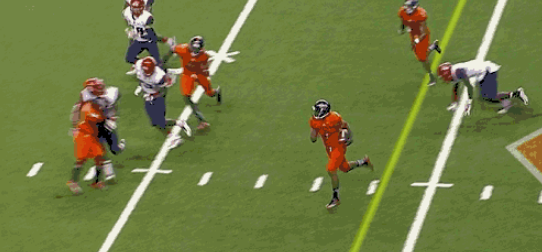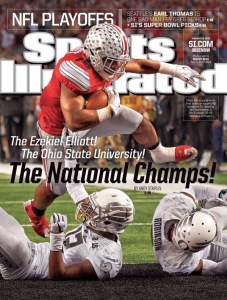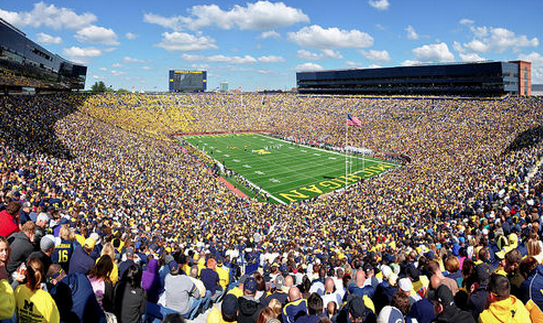It’s amazing to see the reaction to the various football headlines concerning athletic compensation, both on the collegiate and at professional level.
In the same headlines we are seeing increased news of athletes with serious injuries resulting for some in a lifetime of pain and staggering medical bills.
Whether it’s the early retirement of Chris Borland, the Ed O’Bannon suit against the NCAA, or the compensation package for Michigan head coach Jim Harbaugh. The underlying fact remains, that all of these scenarios wouldn’t be possible if it wasn’t for collegiate student athletes who sacrifice their bodies for their university.
Football players are modern day gladiators. These ambitious young athletes leave high school with wide eyes and excitement to play for their university. Yet, statistics show that athletes who participate in contact sports such as football are prone to violent collisions which result in more and more serious injuries.
It’s great to see the Pac 12- lead the way in compensating their athletes by extending their health insurance for up to four years after the athlete leaves school. It is my opinion that Collegiate football players who suffer severe injuries should have their health insurance covered for a of minimum of at least 10 years.
The NCAA Division I board of directors recently voted 16-2 to allow schools in the top five conferences to write many of their own rules. The autonomy measures — which the power conferences had all but demanded — will permit those leagues to decide on things such as cost-of-attendance stipends and insurance benefits for players, staff sizes, recruiting rules and mandatory hours spent on individual sports. In addition, guaranteed four year scholarships is a great step for athletes.
Others have suggested the idea of setting up a trust fund where each student athlete would get a twenty thousand dollar check after they leave school. This would help offset medical costs for those who are injured. 
If we took the top seventy five big schools with eighty five man rosters and compared it to the estimated billion dollar revenue of the NCAA it would equate out that each athlete adds over a million dollars in revenue to each school. The point is that big schools are profiting in every way by student athletes, and universities should be there well beyond four years of health insurance following severe injuries. It’s a great start but consider the number of athletes that have had a catastrophic injury that require multiple surgeries.
Athletes who knowingly participate in a game such as football understand the huge risks. Concussions and severe broken bones can add to catastrophic injuries with insurmountable bills. Athletes who leave their dashed college dreams with severe injuries are not financially and emotionally equipped for dealing with their injuries.
From personal experience, I know the emotional and physical pain of enduring multiple and extensive surgeries. Nevertheless, the young starry-eyed athlete is most likely unaware that possible injuries could take years to overcome with a lifetime of possible negative effects.
It is my personal opinion that student athletes on scholarship should be compensated for any use of their likeness. The current Ed O’Bannon case which is in litigation with the the NCAA illustrates this point and lays a case for the likeness compensation. Compensation should come in many forms for student athletes because the financial benefit to universities and their communities is staggering. Athletes after giving it all on the field for four years have the next fifty years to live their life.
Recent reports show that big universities such as Michigan and Ohio State are billion dollar brands! It’s remarkable to see coach Jim Harbaugh of Michigan University land a forty million dollar contract, then acknowledge that he’s over-paid. The 5 million dollar budget for their coach is a drop in the bucket for Michigan.
These wealthy schools can afford to compensate high risk athletes. I am grateful these topics are being brought to the forefront, and steps are being taken to help college athletes get the compensation they deserve beyond their playing days, as well as compensating them for their brand likeness and both on and off the field.
Since my career ending injury at the University of Arizona back in 1983, I have suffered through 17 knee surgeries including 7 total knee replacements to the same knee (costing close to 1 million dollars in medical bills and loss of work). Yet, I would play all over again if given the chance. College football is a game of life that has helped me grown into the man I am, and I would not trade it in for anything. Football is the game that my father played before me at Stanford University on a full-ride scholarship.
For young hopefuls, the experience of going through the recruiting process, and then finally competing on scholarship in a game at a university is a life changing event. I truly believe that scholarship athletes deserve the security of medical insurance for at least a period of time of up to ten years, or until their college injury is fully healed.



Leave A Comment